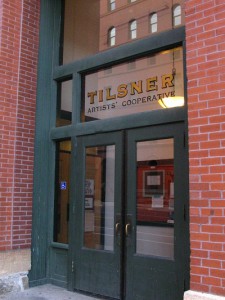 The Twin Cities arts community surfaced in the news lately, but not for the sake of art. It was because last month the Institute on Metropolitan Opportunity at the University of Minnesota Law School released its report The Rise of White-Segregated Subsidized Housing,” which examined the makeup of local artist lofts and their tax credit system in comparison to more conventional subsidized housing. The study found that subsidized artist housing in the Twin Cities is overwhelmingly occupied by white populations, in stark contrast to other local public housing. As an example, the Tilsner Artists Cooperative in the heart of Lowertown is 92% white, according to the report. These findings made headlines in publications including The Atlantic as well as this week’s Minnesota Lawyer.
The Twin Cities arts community surfaced in the news lately, but not for the sake of art. It was because last month the Institute on Metropolitan Opportunity at the University of Minnesota Law School released its report The Rise of White-Segregated Subsidized Housing,” which examined the makeup of local artist lofts and their tax credit system in comparison to more conventional subsidized housing. The study found that subsidized artist housing in the Twin Cities is overwhelmingly occupied by white populations, in stark contrast to other local public housing. As an example, the Tilsner Artists Cooperative in the heart of Lowertown is 92% white, according to the report. These findings made headlines in publications including The Atlantic as well as this week’s Minnesota Lawyer.
No one suggests that there is a deliberate, conscious effort to keep these artist lofts white-occupied. Yet the report raises questions about the nature of the use of the Low Income Housing Tax Credit (LIHTC) system utilized by the artist housing projects. Other unspoken forces may be at play. Neighborhood residents may be more accommodating of “artists” occupying the historic building on their block, rather than “poor people.” And the application process itself may be subtly unfavorable to artists of color. To be fair, not all artist housing in the Twin Cities has such racially-skewed numbers. At the 653 Artist Lofts in Frogtown, only 50 percent of residents are white. But these accommodations are much more modest in comparison to those like the Tilsner. Indeed, some of the housing illuminated in this report stands out in its luxury factor. This picture from the Pioneer Press of the rooftop deck of the Schmidt Artists Lofts shows truly stunning living amenities.
Is this an unfair attack on artists lofts? Developers and housing advocates say that artist housing projects hit a variety of city goals, such as historic preservation and redevelopment of vacant industrial sites in neighborhoods that could sometimes use an economic development boost. They keep an artistic element in areas that are gradually gentrifying. They also feature in very public community events like the St. Paul Art Crawl. Artists lend a vibe to a neighborhood that affluent residents will pay money to have in their backyards, which we might call the “YIMBY” syndrome. Also, where do artists and art communities stand in a free market setting without such subsidies as these to keep their work space affordable? The recent fate of the Jax Building gives us an idea.
Here’s a final, provocative question: Do these luxury work-life homes risk depriving artists of contact with a more diverse and representative society, which might inspire them to create more socially visible and relevant artwork?